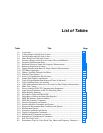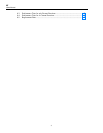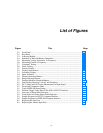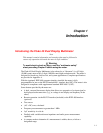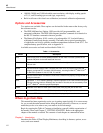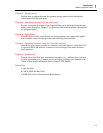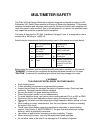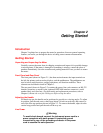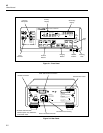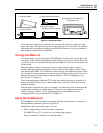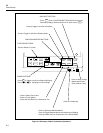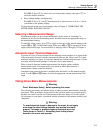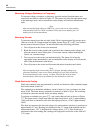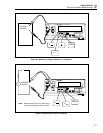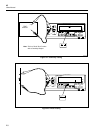2-1
Chapter 2
Getting Started
Introduction
Chapter 2 explains how to prepare the meter for operation, discusses general operating
features, and walks you through the basics of taking some common measurements.
Getting Started
Unpacking and Inspecting the Meter
Carefully remove the meter from its shipping container and inspect it for possible damage
or missing items. If the meter is damaged or something is missing, contact the place of
purchase immediately. Save the container and packing material in case you have to return
the meter.
Front Panel and Rear Panel
The front panel (shown in Figure 2-1.) has three main elements: the input terminals on
the left, the primary and secondary displays, and the pushbuttons. The pushbuttons are
used to select major functions, ranging operations, and function modifiers. These
elements are described in detail in Chapter 3.
The rear panel (shown in Figure 2-2) contains the power-line cord connector, an RS-232
interface connector, a cutout for the (optional) IEEE-488 interface connector, a serial
number label, and a line fuse. (For fuse testing and replacement procedures, refer to
Chapter 6.) Rotate the rear feet 180 degrees before using the meter.
Adjusting the Handle
For bench-top use, the handle can be positioned to provide two viewing angles. To adjust
its position, pull the ends out to a hard stop (about 1/4-inch on each side) and rotate it to
one of the four stop positions shown in Figure 2-3. To remove the handle, adjust it to the
vertical stop position and pull the ends all the way out.
Line Power
WWarning
To avoid shock hazard, connect the instrument power cord to a
power receptacle with earth ground. A protective ground
connection by way of the grounding conductor in the power
cord is essential for safe operation.



